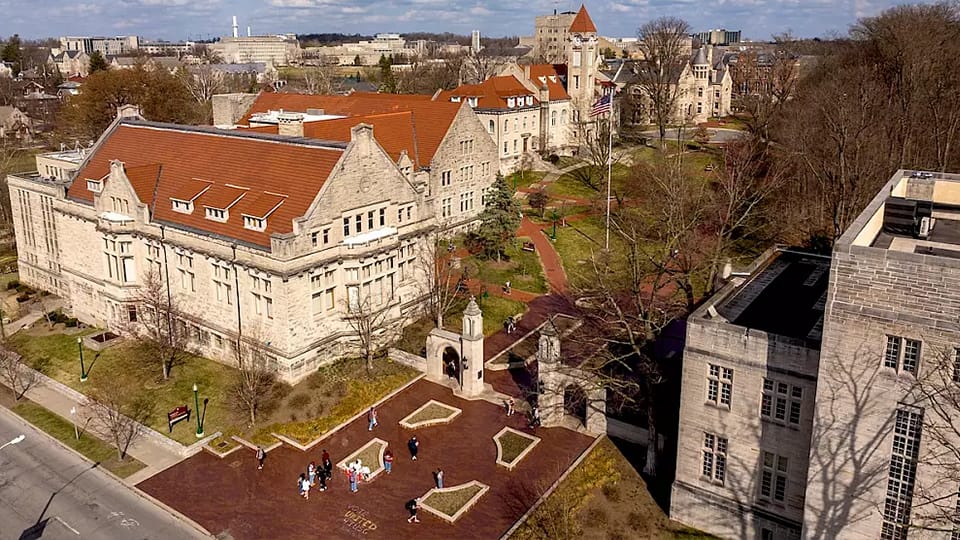IU Media School planning extended reality lab for Bloomington campus
Subscriber Benefit
As a subscriber you can listen to articles at work, in the car, or while you work out. Subscribe Now
Indiana University has unveiled plans for a new lab it says will serve as a hub for the creation, use and study of virtual worlds.
The Kinetic Imagery and Extended Reality Lab, or KIX Lab, will feature a 24-foot LED immersive soundstage known as “The Wall,” which IU said will allow faculty and graduate students to use virtual and augmented reality in research and creative projects across disciplines, such as public art, science, health and education.
David Tolchinsky, dean of The Media School at IU, told Inside INdiana Business that The Wall is similar to what is known as The Volume, which is used to film a popular Star Wars series.
“You can do virtual sets; the the famous example is The Mandalorian [where] rather than green screen where actors are forced to just act in front of a blank wall, they actually see the set. And as you move the cameras, you can adjust the perspective of the set,” he said.
Tolchinsky said the idea for the lab was born out of discussions regarding kinetic imagery as an idea that students might respond to, as well as the potential for its use in areas such as film, science, technology, mental health modeling and climate modeling.
“It’s a place where scientists and artists and graduate students come together and use existing technology, XR, technology, and then developing new technologies and developing grad students who would come up with new ways of using that technology,” he said.
IU said the interdisciplinary potential of the lab will be a key point of focus. In addition to using the lab as an adaptable film set, public health researchers could use it to create spatial experiences to study mental illnesses such as addiction.
“My background is in helping students to think about how mental health is depicted in film and TV,” Tolchinsky said. “So, I could imagine the use of this where you’re actually trying to recreate an internal state like a mental health or mental illness state and also modeling possible therapy.”
In addition to The Media School, the other schools participating in the lab are the Eskenazi School of Art, Architecture + Design; the School of Optometry; the Luddy School of Informatics, Computing and Engineering; the School of Public Health-Bloomington; the College of Arts and Sciences; and the Jacobs School of Music — as well as University Information Technology Services.
Tolchinsky said the collaboration among the schools was a key selling point to the university to build the KIX Lab.
“It becomes less about you trying to do something only for yourself or your school; it’s just showing that this is an interest university wide,” he said. “We also think that it is so interesting that it could bring new students, new resources, and for me trying to build up the reputation of the media school, bring new interesting scholars and artists to our school.”
IU said the schools will use the lab to create new graduate programs focused on immersive technologies and attract new faculty. But the KIX Lab will also have an impact beyond the Bloomington campus.
“Collaborating with local communities, faculty will use the lab to create interactive public art, science, health and education projects,” IU said in a news release. “And the facility will create connections with industry, with the soundstage available to rent for local commercial productions.”
An estimated cost of the KIX Lab is not yet known. IU said it will begin searching for two faculty members to run the lab this fall, with construction to follow at a later date.
IU noted that the lab could be expanded to a facility at the IU Indianapolis campus in the future.
